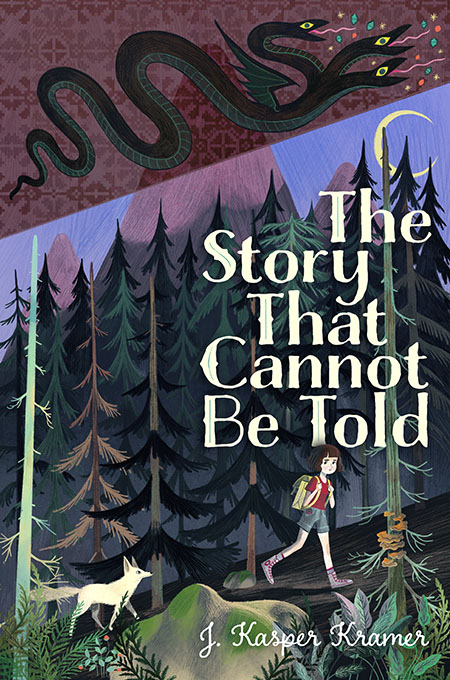Rye Wit
Clay Risen talks about death, history, and the rebirth of America’s first spirit
From Old Monongahela, the generic name for the spirit that dominated American tastes in the 19th century, through the distinct styles of Kentucky, Maryland, and the myriad expressions of the latest micro-distilleries, Clay Risen explores all things rye in American Rye: A Guide to the Nation’s Original Spirit. This is his third book in a series that includes American Whiskey, Bourbon & Rye and Single Malt.

Risen, a New York Times reporter and editor who grew up in Nashville and occasionally writes for Chapter 16, is also known for writing obituaries and for various works of U.S. history. Recently he spoke with Chapter 16 by phone about the rebirth of rye as a popular spirit, his other writing interests, and the current political moment.
Chapter 16: In the introduction you recall three decorative decanters on a sideboard at your grandmother’s house, labeled with metal tags reading “Scotch,” “Bourbon,” and “Rye.” Did any relatives or visitors choose the rye bottle?
Risen: No. It was untouched, which fits with attitudes toward rye at that point. It was more like a historic curiosity than anything else. I was probably more curious about it because all the adults probably knew what it was or knew what it had been. I had no idea what rye was. I don’t think I ever tasted it until 2006 or 2007, as I was getting to know bourbon and rye was bourbon adjacent. Back then there were very few ryes out there, so I probably would have been drinking Jim Beam rye, which isn’t that different from Jim Beam bourbon. You flip a few percentages here and there, and you have a rye in name only.
Chapter 16: It’s been nine years since your guide to bourbon was published. What’s changed in the world of whiskey since then?
Clay Risen: Well, I’ll tell you the biggest: I could never write a book like that again. Then, it was at least possible to conceive a book that covered most of the whiskey in the country. It covered everything in about 300 pages. Today you would need thousands of pages, and it would be out of date almost immediately. New distilleries open all the time. New whiskeys come out all the time. There are so many different facets of the industry of American whiskey that it makes the idea of a comprehensive book a little outlandish. But it does make it possible to do an entire book about rye. In 2013, a book about rye would’ve been 10 pages long. And no one would’ve bought it. Today I can cover most everything out there. This book is a statement about this one spirit that for a long time was practically forgotten or was treated as a tiny little adjunct to bourbon.
Chapter 16: What makes rye so American?
Risen: As a grain, rye has been distilled for a long time in Europe. There still are rye-based spirits in Northern Europe, but they’re very different from rye whiskey. Our marriage of aging and a predominantly rye mash bill is something that until recently was unique. It was being distilled here long before bourbon, long before any other type of whiskey. It was one of the first things people started making when they came over. They brought rye grain with them and found that it grew well in the rocky soils along the East Coast. Rye whiskey evolved along with American culture and society, which provides a way to tell the story of America through this one particular spirit.
Chapter 16: In the section “How to Drink Whiskey,” you write that “you should treat a whiskey you don’t know like a dog you don’t know.” Metaphorically speaking, were you bitten by any bad dogs while working on the book?
Risen: Sure. Rye is spicy and often has a little edge to it. I like that a lot. But it can catch you unawares. If you stick your nose right in it, it can bite back.
Chapter 16: I’ve enjoyed your palate notes in previous books. They’re often surprising and sometimes poetic. Some in this book were linen, Big Red chewing gum, aspirin, flat cola, and cherry cough syrup. What does linen taste like?
 Risen: There are two ways to think about tasting notes. The first a quasi-scientific approach. You get a bunch of great noses in a room and have everyone sit down and calibrate. There is a right set of smells to find and a right set of tastes to find, and those things are indicative of qualities of the whiskey. That’s one way to do it, and that’s perfectly fine. The way I do it is much more impressionistic and suggestive. What I’m trying to get across is a general sense of what this whiskey is like. I hope when people read the notes, it sets off something in their imagination. What would linen taste like? Something airy and maybe slightly floral, sort of soft, maybe a little waxy. The idea is to be a little playful with it.
Risen: There are two ways to think about tasting notes. The first a quasi-scientific approach. You get a bunch of great noses in a room and have everyone sit down and calibrate. There is a right set of smells to find and a right set of tastes to find, and those things are indicative of qualities of the whiskey. That’s one way to do it, and that’s perfectly fine. The way I do it is much more impressionistic and suggestive. What I’m trying to get across is a general sense of what this whiskey is like. I hope when people read the notes, it sets off something in their imagination. What would linen taste like? Something airy and maybe slightly floral, sort of soft, maybe a little waxy. The idea is to be a little playful with it.
Chapter 16: Some do seem more literally descriptive. When you mentioned Big Red, for example, I knew exactly what you meant.
Risen: Yet that is not a tasting note that many professional, by-the-book tasters would accept. There are other terms. One of the things I try to do with all my books is to be culturally specific. This is a book about an American-made and American-consumed drink, so I write for an American palate in a cultural sense. Readers will get these notes in a way that someone else, from somewhere else, might not. If I make a distinction between Red Hots and Atomic Fireballs and Big Red, a lot of American readers will understand. I have a friend who grew up in Thailand, and he can differentiate different kinds of lemon grass. He’ll say, “Oh, that reminds me of this lemon grass that grows in southern Thailand that they use in this dish.” I couldn’t tell the difference, but it’s fascinating to have that conversation. I’m ultimately writing tasting notes for people who are looking to buy whiskey, to help them decide, “I want this one or that one.” But once they buy the whiskey, I hope it spurs conversation. Maybe they agree, maybe they disagree. Maybe they and their friends try it and say, “Oh, you know, he says this has Big Red flavor. I think it’s really Red Hots.” And then another says, “No, I think it’s more like powdered cinnamon.”
Chapter 16: Let’s talk about your other job, as an obit writer for The New York Times. Week in and week out, you share stories of people who may not be household names, but who have led extraordinary lives. What is your process?
Risen: Each one is a little different. These are assigned to me, and I really like having no idea what’s in the box when I wake up in the morning and open that email. And then I find out, today I’m going to spend my time with a documentary filmmaker or a research scientist or a politician. Sometimes it’ll involve a lot of digging. Sometimes the research will take me in different directions. An obituary needs to check certain boxes and fit a basic form, but within that, I have a lot of freedom to decide the storyline. Sometimes it’ll be readily apparent, but other times not so much. Why do you, as the reader, need to know something about this person? Who is the person behind the achievement or whatever makes them noteworthy? It’s energizing. It gets me up in the morning. There’s almost something sacral about it, knowing I am helping to put this person into history.
Chapter 16: My last question is about your third job: writing history books. Are you working on one now? If so, does it in any way resonate with our current political moment?
Risen: Yes, I have a book due in July about the second Red Scare of the 1940s and ‘50s. It certainly has a lot of resonance. For example, New York and California and a lot of other states cracked down on high school and elementary teachers, essentially creating a blacklist for teachers who might have said anything in the classroom that showed any sort of sympathy for communism. You can’t read this stuff without hearing an echo in today’s coverage, of the way teachers are treated around critical race theory or discussions of sexuality or gender. It was worse during the Red Scare, when there were state laws with clear ways to punish teachers and blackball them from the profession. We may get there. They had the sort of grassroots vigilantism that we see today, with the public acting on hearsay and rumors and their “own research.” It’s very hard to read about the career of Senator Joe McCarthy and not feel like this is a play that is continually being reproduced on our political stage.

Michael Ray Taylor is the author of Hidden Nature and other books. He lives in Arkansas.





